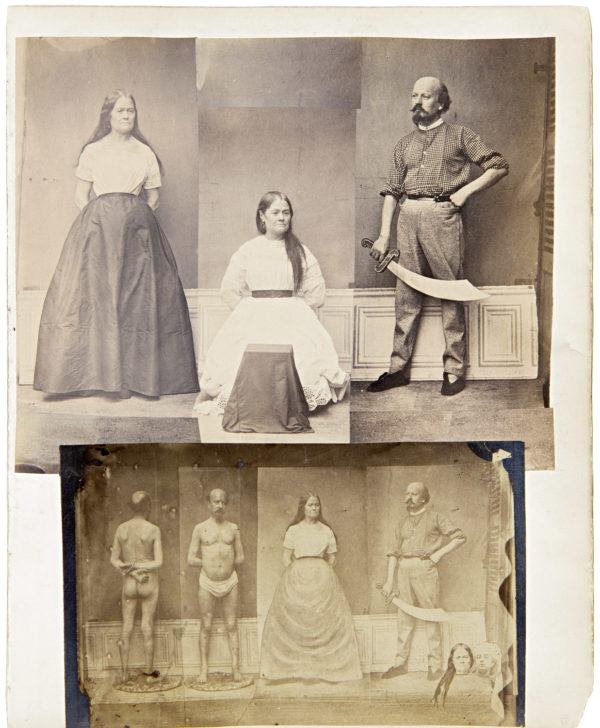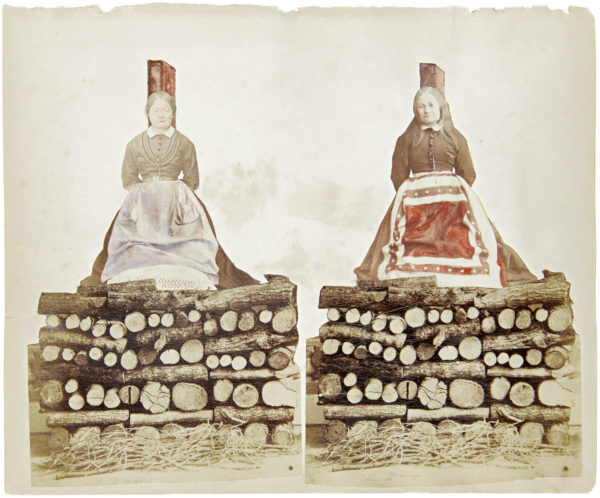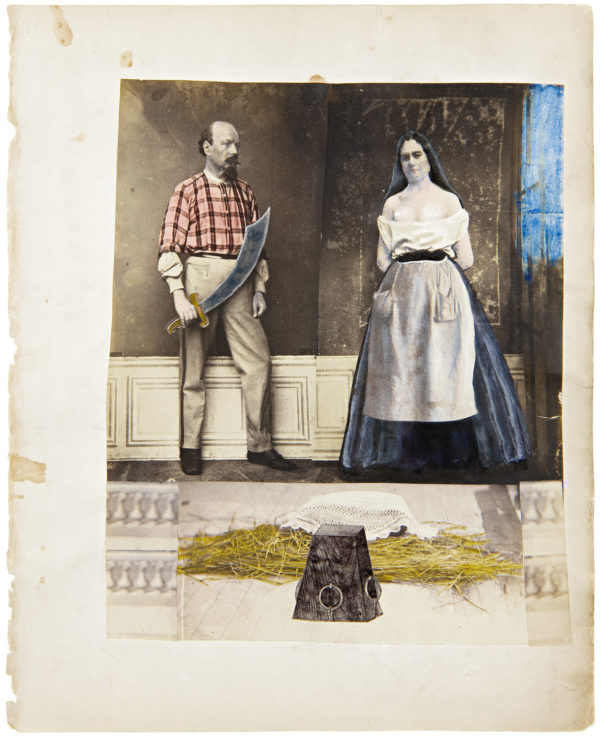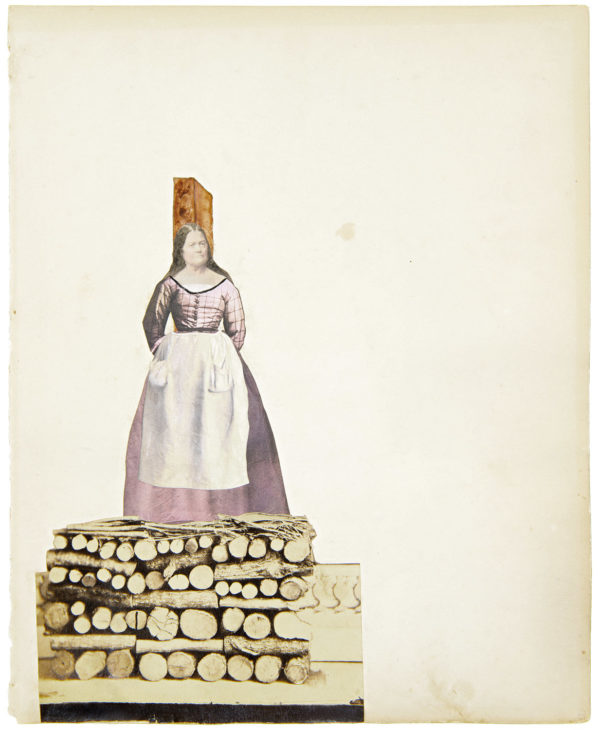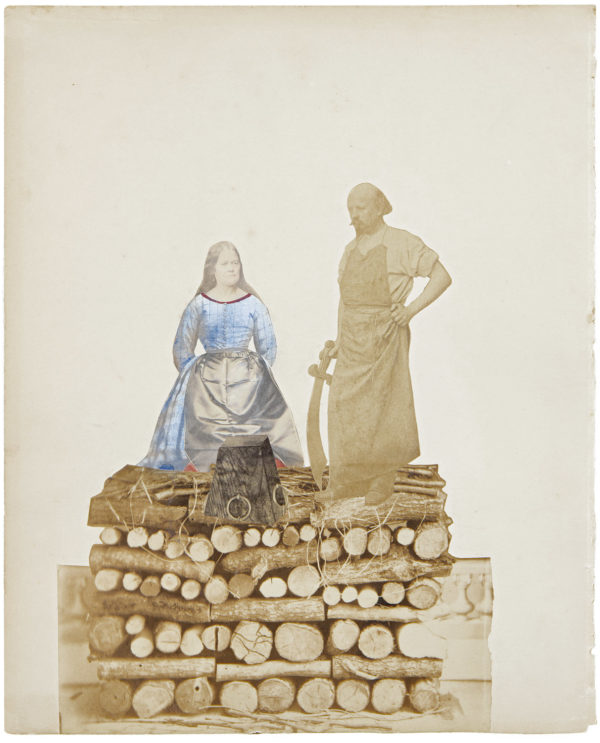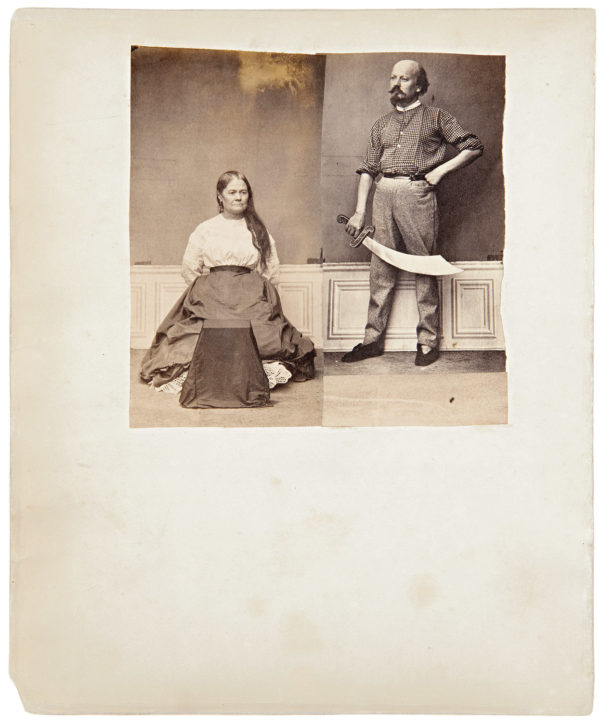No information has been found on the creator of this album, retrospectively titled Obsession, except the era and where he may have lived. The photographic tech- nique employed makes it possible to date the album’s creation to the 1870s. The newspaper Petit Lyonnais, the first issue of which was published in Lyon, France, on August 10, 1871, appears in one picture, suggesting that the artist may have lived in the region around Lyon. The author made salted paper prints at the time commercial studios used albumen prints, which indicates that he was probably a skillful amateur photographer rather than a professional one. The album contains photographic collages —some of them colored— showing scenes of martyrdom on a pyre or by decapitation. The protagonists are women (five or six models), who are usually accompanied by the same man in the role of executioner. The album originally contained about ninety-five pages. Unfortunately, over the years, some pages have been dispersed or detached, which makes it impossible to reconstruct the original order of the plates. It would be tempting to think that the woman who appears most often— one who is fairly old, quite plain looking, with an oval face, and never smiling—was the wife of the male character, but this is far from certain. Very few different poses or attitudes are included: the woman is in a position of submission, her arms behind her back, kneeling or stand- ing; the man dominates her, sword in hand. Thanks to the collage technique, which permits juxtaposition and repetition, the two figures are placed beside each other relatively randomly.
We can discern various influences in these photomontages. The composition is reminiscent of a scene on a theater stage, but there is also a reference to tableaux vivants (living pictures). In addition, the portrayals of executions attest to their creator’s knowledge of art. For instance, we recognize analogies in both style and substance with the paintings of Paul Delaroche (1797–1856), particularly The Execution of Lady Jane Grey (1833).
The use of a platter to receive the decapitated head refers to paintings of John the Baptist and Salomé. These pictorial quotations generate a certain distance from the cruelty of the scenes portrayed.
Some pages of the album belong to various private and public collections, including that of the Musée d’Orsay in Paris. One excerpt with works by the German artist Hanne Darboven (1941–2009) was published in 1993 by Hamburg, Werner Bokelberg.
